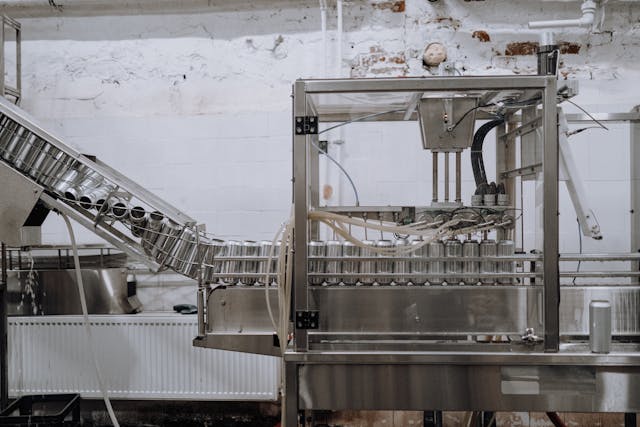The concept of the smart factory, initially called “smart process manufacturing,” originated in 2006 during a National Science Foundation workshop on cyberinfrastructure. This concept, later renamed “smart manufacturing,” involves using advanced technologies to develop adaptable and flexible manufacturing capabilities.
Full deployment of industrial Internet of Things (IIoT) devices for this use was eventually realized by Schneider Electric when the company built its first smart factory. Smart advances included:
- Reduced the meantime for repairs by 20%.
- Reduced energy consumption by 3.4%.
- Reduced paperwork by 90%.
- Eliminated $500,000 of Work in Progress (WIP) inventory.
- Reduced downtime by 5% by removing data silos.
- Early investments in the project began in the early 1990s, but because of the building’s age, the full transformation took decades to complete. According to a recent study by Grand View Research, as of 2022, the global smart manufacturing market was valued at $277.81 billion and is projected to grow to $754.1 billion by 2030.
What is a Smart Factory?
A smart factory, powered by a myriad of transformative technologies, creates flexible, self-adapting manufacturing capabilities. By connecting machinery with sensors to gather data, these technologies not only improve efficiency and reliability but also revolutionize end-to-end processes and decision-making.
The ability to generate data in real-time across an enterprise is what makes a smart factory smart. Smart manufacturing connects digital and physical actions for quicker responses to market fluctuations throughout the supply chain.
How does a Smart Factory work?
Smart factories use sensors and industrial IoT devices to collect and analyze data at every step of the manufacturing process. Sensors can be placed along assembly lines. Should the sensors detect an increase in ambient temperature above an established threshold, this could indicate unwanted friction and impending equipment failure. Notification systems could then alert operators and urge them to check equipment, potentially heading off costly downtime.
In smart factories, ongoing data collection provides opportunities for continuous improvement of manufacturing processes while also mitigating risk.
What are the benefits of a Smart Factory?
Smart factories leverage advanced technologies such as IIoT, automation, and AI to optimize production processes. Advantages include:
Increased Efficiency and Productivity
Smart technologies automate repetitive tasks, minimizing redundancies and eliminating waste, allowing production to accelerate without compromising quality. Inventory needs become easier to anticipate, and downtimes are reduced. Predictive maintenance, based on real-time data, helps floor managers avoid equipment failures and optimize resource allocation.
Improved Decision-Making
Centralized data enables key personnel to make informed decisions throughout the manufacturing process. Enhanced supply chain visibility aids in predictive analytics, which helps forecast future trends and anticipate potential challenges.
Cost Reduction
Smart technology streamlines operations and reduces errors because it can identify when processes need improvement. Such data-driven changes can reduce energy consumption and minimize waste by crafting a more efficient production process. These new technologies can also optimize inventory management by allowing for precise demand forecasting, which helps avoid supply shortages and overstock.
Reduced Carbon Footprint
Efficient resource utilization and waste reduction contribute to a reduced environmental impact. Integrating eco-friendly materials and renewable energy sources will improve any company’s sustainability profile.
Better Working Conditions
As routine work becomes automated in smart factories, employees are empowered to focus on high-value tasks. Automating hazardous processes is especially valuable for industrial settings, as it significantly reduces the occurrence of workplace accidents. Data-driven experimentation also fosters a culture of innovation, which has been shown to empower workforces and encourage employee engagement in the long term.
The benefits of outfitting a manufacturing facility with smart technology are unique to each industry. Labor shortages can be alleviated with robots and automated processes. Regulated industries can use shared data to ensure procedures adhere to relevant standards and regulations.
What are the Challenges of Smart Manufacturing?
Most of the challenges associated with smart manufacturing tend to revolve around infrastructure. While many companies have started building smart factories, only a select few have achieved a comprehensive data capture infrastructure capable of delivering standardized information to a central repository where advanced technologies can access and utilize it.
Power Issues
Facilities planning to integrate peripheral devices require data connections with high-speed Ethernet, but this is often constrained by power limitations. Installing new devices may not be possible with older wiring, or it may be too expensive to reposition existing electrical infrastructure.
Speed Issues
Superior speed is a must in smart manufacturing. An adequate data transmission speed is one that allows the massive amounts of data being collected by IIoT devices to flow unencumbered without impacting regular operations. In the past, smart factories struggled to find cost-effective solutions to internal speed limitations.
Hybrid solutions like Power over Ethernet (PoE) can help bridge the gap needed to support smart technology. PoE technology can deliver high-speed data connectivity and power to powered devices through a single Ethernet cable. This enhancement reduces cabling and electrical requirements and conserves resources.
What is Power over Ethernet (PoE)?
IIoE devices require two cables: one for power and one for data. PoE technology delivers power and data over a single Ethernet cable. Using PoE connections in a smart factory saves installation costs and contributes to a safer, less-cluttered work environment.
What are the four types of PoE?
The Institute of Electronic Engineers (IEEE) issues PoE device standards on an ongoing basis. The four standards currently in place are:
- IEEE 802.3af (PoE) Type 1
Maximum power per port: 15.4 W.
Uses two of four available pairs of wiring within a single Ethernet cable to deliver power and data.
Suitable for low-power devices such as wireless access points and IP phones. - IEEE 802.3at (PoE+) Type 2
Maximum power per port: 30 W.
Uses two of four available pairs of wiring within a single Ethernet cable to deliver power and data.
Supports higher power devices like IP cameras and wireless access points with multiple antennas. - IEEE 802.3bt (PoE++) Type 3
Maximum power per port: 60W.
Uses all four available pairs of wiring within a single Ethernet cable to deliver power and data.
Accommodates high-power PoE devices like video conferencing equipment and PTZ cameras. - IEEE 802.3bt (PoE++) Type 4
Maximum power per port: 100W.
Uses all four available pairs of wiring within a single Ethernet cable to deliver power and data.
Supports high-power devices with high power demand, such as laptops and thin clients.
These standards cover all types of PoE devices, from the simple demands of a single sensor to the complex requirements of an IP-based camera network.
PoE plays a pivotal role in the development of smart factories










